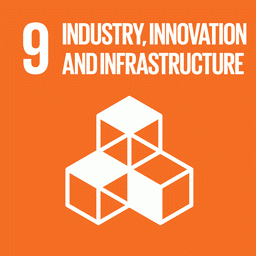The Amazon accounts for 57% of all the country’s Legal Reserve liabilities, a category that represents the minimum amount of vegetation required by law on private rural properties. This is shown by the updated data available on the Forest Code Thermometer, a tool from the Forest Code Observatory that aims to monitor the implementation of the legislation passed in 2012 in the country. The data refers to the period up to 2022.
The tool, which is an initiative of the Forest Code Observatory (OCF), developed by the Amazon Environmental Research Institute (IPAM) and partners, is a practical instrument for accessing information in a free and simplified way and which provides transparency about the data on the implementation of the Forest Code. It was launched on February 21 and can be watched on YouTube by the Forest Code Observatory.
According to the Forest Code, rural properties in the Amazon must have 80% legal reserves, i.e. protected vegetation, on each property. When all the properties are added together, the tool shows that the Amazon currently has a deficit of 9.4 million hectares.
The biome is followed by the Cerrado, with a deficit of 3.9 million hectares, and the Atlantic Forest, with 2.5 million hectares.
However, this last biome is responsible for a large part of the Permanent Preservation Areas (PPAs), with 33% of the total, a figure that may still be underestimated.
Second on the list, the Cerrado has the largest deforested area among the biomes: it accounts for 53% of the deforestation that took place after July 22, 2008, the legal framework for forest protection in the country. It is also the biome that has the most ‘active’ Legal Reserves, i.e. surpluses of protected vegetation within rural properties, at 39%.
“The new tool provides more accurate data on the implementation of the Forest Code in the country. It shows where the deficits and surpluses are concentrated, so we can see how the law is being implemented in the field,” says Roberta del Giudice, executive secretary of the Forest Code Observatory.
The platform
The new version of the platform presents information with updated maps and graphs and the available filter layers have been reconfigured for better visualization and search, as well as a greater amount of information.
As before, the platform shows information by state and municipality, but also the aggregate for the whole country and the six Brazilian biomes. The graphics have also been redesigned, including new data and filters that can be customized according to the user’s interests. The information is available for settlements, rural properties and traditional territories.
On the data side, the new feature is that the platform now provides data on embargoed areas, i.e. areas that have been prevented from being used due to a breach of the law, as well as areas with Vegetation Suppression Authorizations (ASVS). In addition, new maps allow you to understand the condition of Permanent Preservation Areas (APPs), Remnant Native Vegetation (RVN) and Legal Reserves (RL) at municipal, state and federal levels.
A panelist at the Thermometer launch event, Cristiane Prizibiski, a journalist for O Eco, commented on the importance of the data for the role of the press.
“Newsrooms are becoming increasingly lean and information needs to be more and more chewed up, given the limited time journalists have to produce news and reports. Nowadays, data visualization is increasingly present, and with the tool making data and reports available, it’s a ‘Disneyland’ for us,” he commented.
For the judge of the Pará Court of Justice, Emerson Carvalho, a panelist at the event, the platform’s information provides greater security when judicial decisions are made. “With the thermometer, we have access to the area of the images to find out how that region is doing, providing the judge with information that allows him to make a more secure analysis,” he said.
Transparency on the agenda
One of the data points provided by the new edition of the Forest Code Thermometer refers to the transparency of environmental information provided by state environmental agencies, such as the state secretariats. The availability of data on environmental regularization by the agencies averages 21%, which is considered low.
“This means that there is still a set of data produced by the states that is either not available, or is public but in a format, detail and update that is inadequate for the use of the information,” explains Ana Paula Valdiones, from the Transparency and Climate Justice program at the Centro de Vida Institute.
Transparency, say the experts, is essential for understanding the dynamics of land use and for advancing solutions for a fair and sustainable economic transformation.
This is what the new publication “Public Transparency and the Forest Code: how the use of public data supports socio-environmental management in Brazil“, co-authored by the Forest Code Observatory, Imaflora and Instituto Centro de Vida (ICV), points out.
The survey, launched at the same event, shows the urgency of increasing transparency more than ten years after the law was published and presents initiatives that demonstrate how the use of information generated by the Forest Code can contribute to the advancement of socio-environmental agendas in the country.
Some of the actions proposed as solutions include greater openness of relevant databases for the socio-environmental agenda, greater unification and integration between government databases and actions that encourage and enable society to use the data generated by the government.
